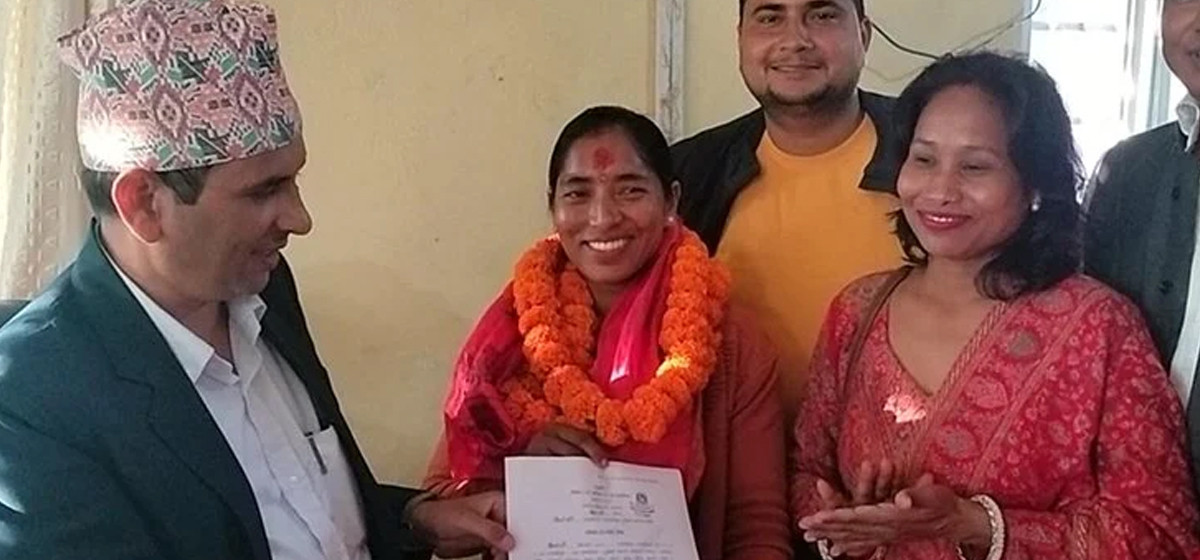Life starts from the womb of a mother and ends with death. Doctors can only prolong life but they cannot stop people from dying. Like birth, death is also one of the eternal realities in this world. People accept the reality of birth easily but ignore the existence of death. The right to live with dignity has been recognized as a fundamental human right but the right to die with dignity has not been accepted by most of the countries in this world. The term euthanasia is a combination of two Greek words, 'eu' which means good and 'thanatos' which means death, referred to as 'euthanasia' in English. Thus putting them together means good death. Euthanasia, also called mercy killing, is the practice of painlessly putting to an end to people’s suffering from painful and incurable disease or incapacitating physical disorder or allowing them to die by withholding treatment or withdrawing artificial life-support measures. The word “dignity” is derived from the Latin, dignities, meaning worthiness and nobility. Human rights are for the betterment of human beings, if we see in this context it is better to die painlessly instead of living the life which is meaningless and painful if treatment is not possible. In Hinduism there is a prominent philosophical system that recognizes the right to die and end one's life. Prayopavesa, a practice in Hinduism, signifies the death by fasting of those without desire or ambition, and is allowed in cases of terminal disease or disability. Hindu philosophy has numerous examples of yogis and Rishimuni who left their bodies due to no desire or ambition, and who have no responsibilities remaining in life.
Euthanasia will be permitted in a number of nations as of 2023, including Belgium, Canada, Colombia, Luxembourg, the Netherlands, New Zealand, Portugal, Spain, and the Australian states of Queensland, New South Wales, South Australia, Tasmania, Victoria, and Western Australia.
Types of Euthanasia
There are mainly five types of euthanasia which can be categorized on different basis. On the basis of methods adopted, there are mainly two types – one is active (positive, direct) and the other one is passive (negative, indirect). Active euthanasia is the practice of taking steps with the intention of bringing about or hastening death. These options may include lethal injections or overdoses administered by medical professionals or other people while passive euthanasia is when death is caused because a treatment that is sustaining the life of the patient is held off and the patient dies as a result thereof. In "passive euthanasia" the doctors are not actively killing anyone; they are simply not saving him. Similarly, on the basis of consent, it has been categorized into three types, one is voluntary euthanasia which is committed with the willing and autonomous cooperation of the subject. This means that the subject is free from direct or indirect pressure from others. Next is non-voluntary euthanasia which is performed when the individual is unconscious or otherwise unable to give consent. Euthanasia may be carried out with the consent of the patient or at the caregiver's discretion with approval from a court or family members. Last is involuntary euthanasia which is committed on a subject against his expressed wishes.
Supreme Court legalizes passive euthanasia in India

One of the most important questions is why the right to die with dignity must be recognized as human rights?
First of all, euthanasia is the right of self-determination which is one of the inherent rights of human beings. Article 1 of the ICCPR, 1966 has guaranteed that all peoples have the right of self-determination. Many people believe that everyone has the intrinsic right to self-determination. This right is viewed as a means of ensuring that people have control over their own life and is founded on the ideas of autonomy and self-determination. In some cases, such as when a person has a terminal illness with no chance of recovery and is in excruciating agony, some people think that the right to self-determination should include the choice to choose euthanasia. This right is based on the principles of autonomy and self-determination, and it is seen as a way to ensure that individuals have control over their own lives.
In the case of Hunter and the New England Area Health Authority v A(74 NSWLR 88, 40), the Court held that if an advance care directive is made by a capable adult, and it is clear and unambiguous, and extends to the situation at hand, it must be respected. It would be better to administer medical treatment to the person of a kind prohibited by the advance care directive.
Next thing to be considered, euthanasia is not an arbitrary killing. Article 6 (1) of the ICCPR, 1966 has mentioned that every human being has the inherent right to life. This right shall be protected by law. No one shall be arbitrarily deprived of his life. Cancer patients in the latter stages of their disease, people with AIDS, and those with other terminal illnesses for which there is no effective treatment are common situations that lead patients to request euthanasia. Physical and psychological elements are two categories for factors that influence decision-making. These patients' physical ailments, such as excruciating pain, nausea and vomiting, trouble swallowing, paralysis, incontinence, and dyspnea, have a negative impact on their quality of life. Depression, feeling like a burden, worrying about losing control or one's dignity, or disliking dependence are examples of psychological factors. In a number of cases in the United Kingdom, it has been established by the law that doctors cannot be charged with a crime for withdrawing a patient's life support if they do so in accordance with their medical judgment and for the patient's best interests. Euthanasia is a key principle for personal happiness and human rights. It is better to die painlessly than to live meaningless, painful lives with ineffective treatment.
Most important idea is that euthanasia ensures death with dignity. First of all, it must be understood that every one's life is important and every person wants to save his/her life from danger. A person only wants to end his life if he knows that there isn’t any chance of his survival, if he thinks it is better to die rather than living with painful and incurable diseases. Advocates of euthanasia argue that it can ensure death with dignity in many ways. First of all, euthanasia preserves an individual's autonomy and control over their final moments by allowing them to choose whether to live or die. Euthanasia offers a humane way to terminate life in a monitored and controlled manner, relieving extreme physical or mental suffering. For individuals who value the ability to die with dignity on their own terms, euthanasia may align with their personal beliefs and principles. As a person knows the exact time of his death as he is going to die, he can fulfill his last wishes with the help of his family.
Euthanasia is guaranteed by right to life and personal liberty. To be human is to die one day. What I say may sound harsh. However, it is better to accept the truth rather than try to live in its shadow. Article 1 of the UDHR states that 'All human beings are born free and equal in dignity and rights'. Similarly Article 3 states that 'Everyone has the right to life, liberty'. Similarly Article 6 of ICCPR mentions that every human being has the inherent right to life. This right shall be protected by the law. No one shall be arbitrarily deprived of his life as in the second argument it has already been mentioned that euthanasia is not an arbitrary killing.
In case of Maruti Shripati Dubal vs State Of Maharashtra, the 10th paragraph states: It is not and cannot be seriously disputed that the fundamental rights have their positive as well as negative aspects.
For example, the freedom of speech and expression includes freedom not to speak and to remain silent. The freedom of association and movement likewise includes the freedom not to join any association or to move anywhere. Freedom of business and occupation includes freedom not to do business and to close down the existing business. If any authority is needed for his proposition, we have it in the decision of the Supreme Court, states the verdict on Excel Wear v Union of India. If this is so, logically it must follow that the right to live as recognized by Article 21 will also include the right not to live or not to be forced to live. To put it positively it would include the right to die, or to terminate one's life. To conclude, euthanasia is the right of self-determination which is not an arbitrary killing that ensures death with dignity.





































